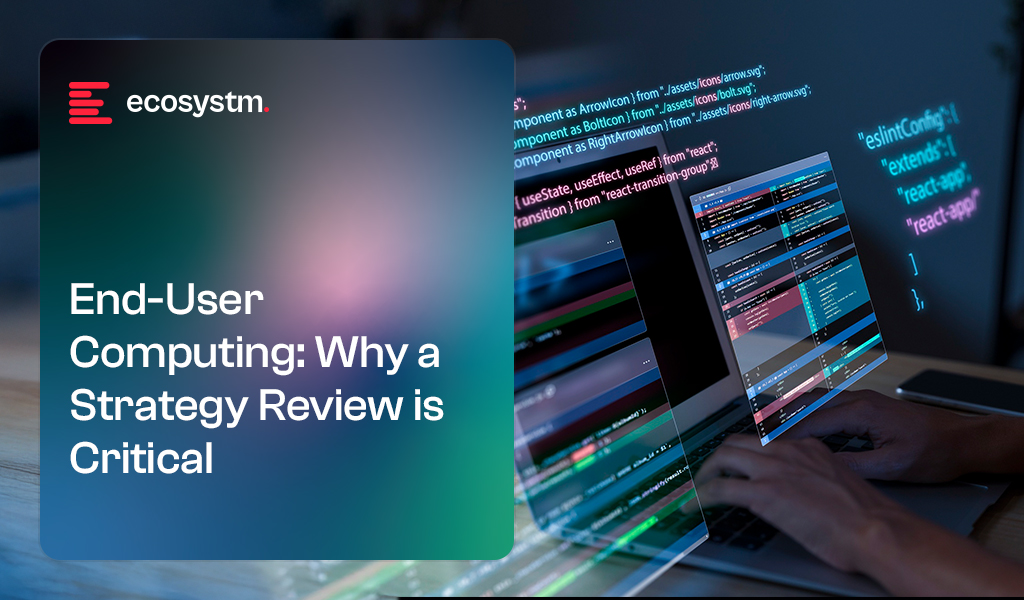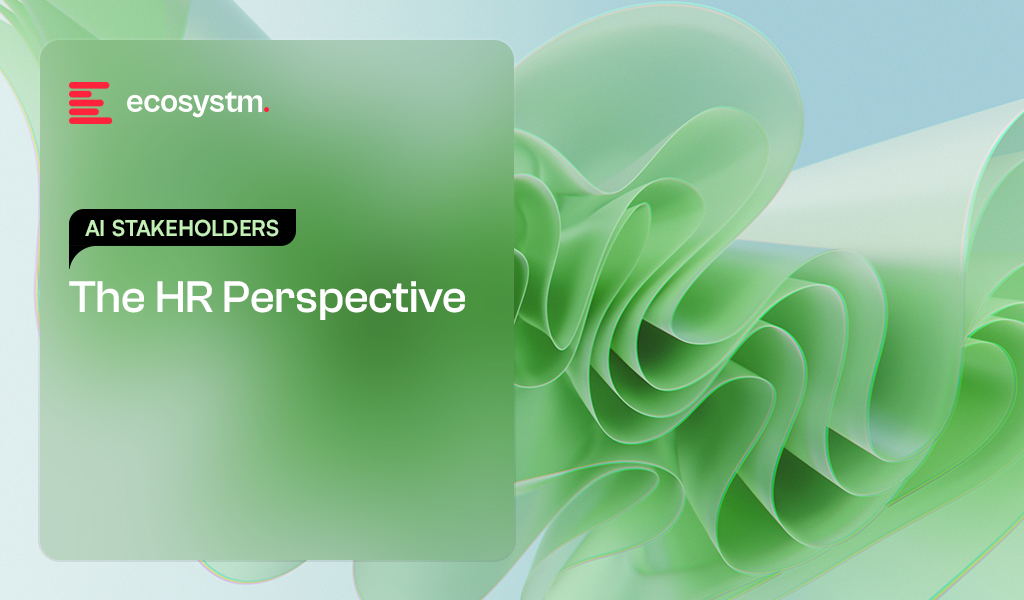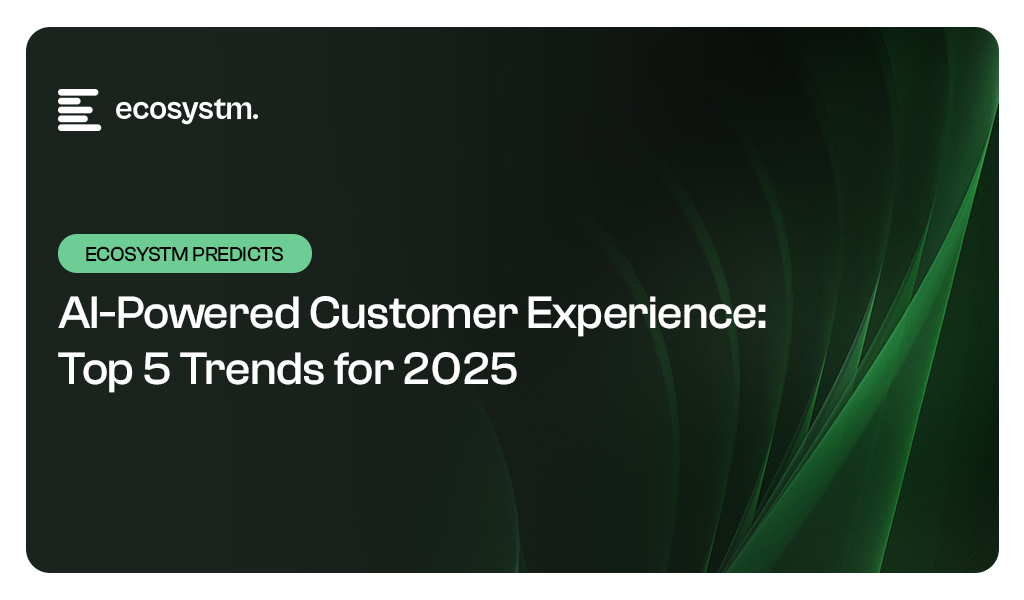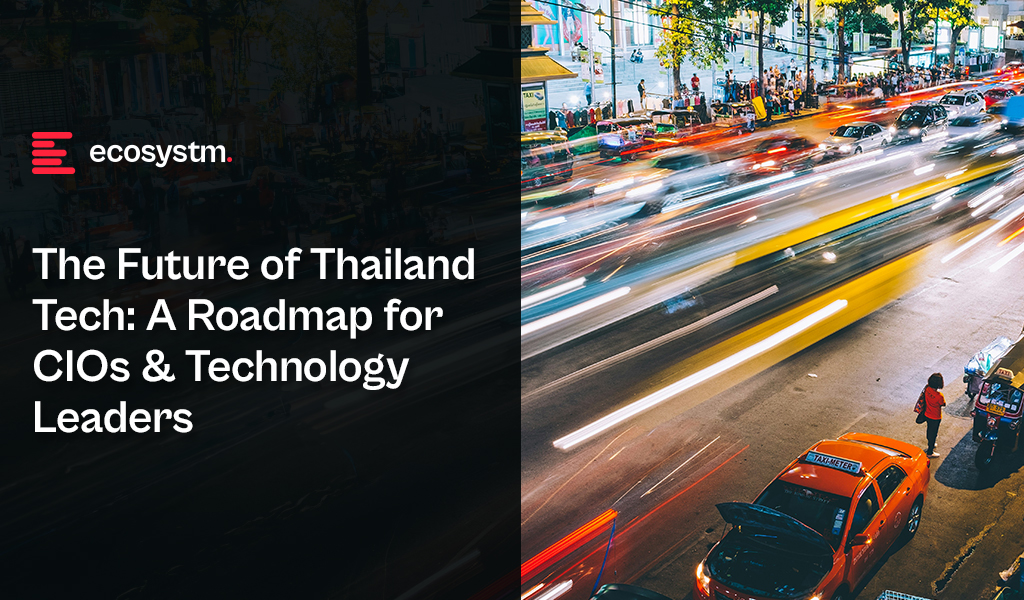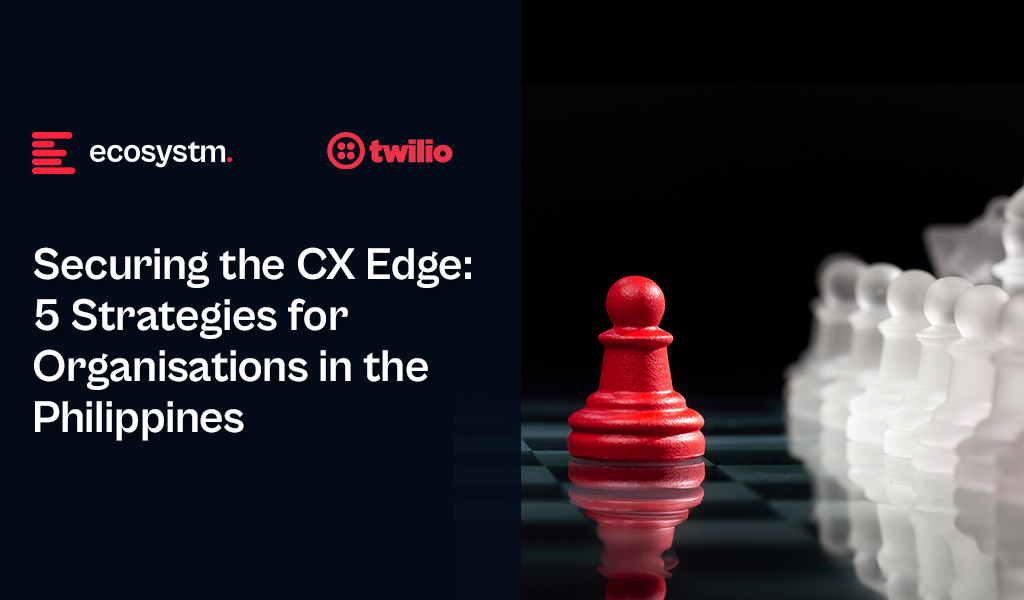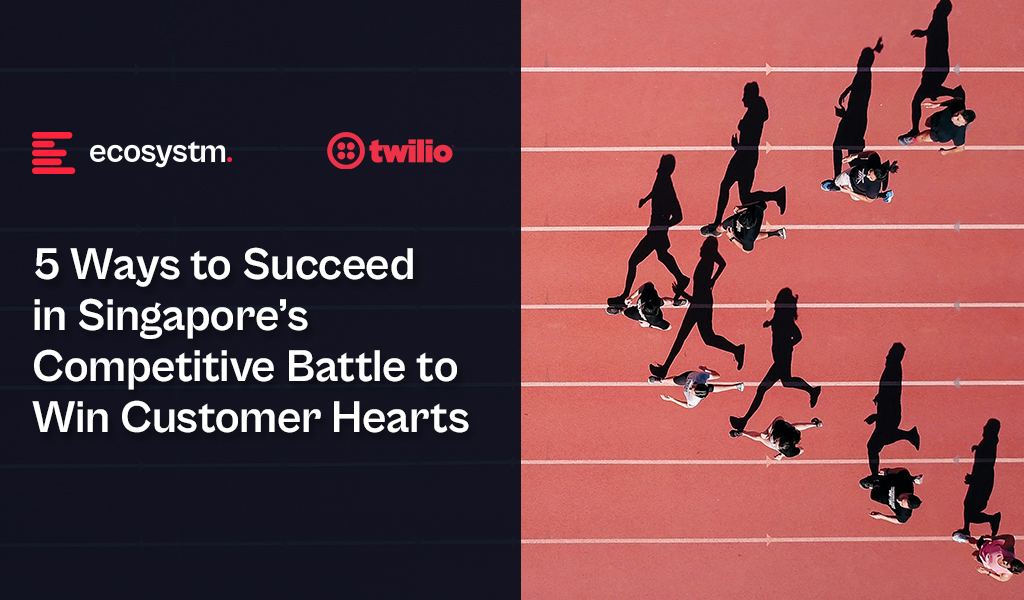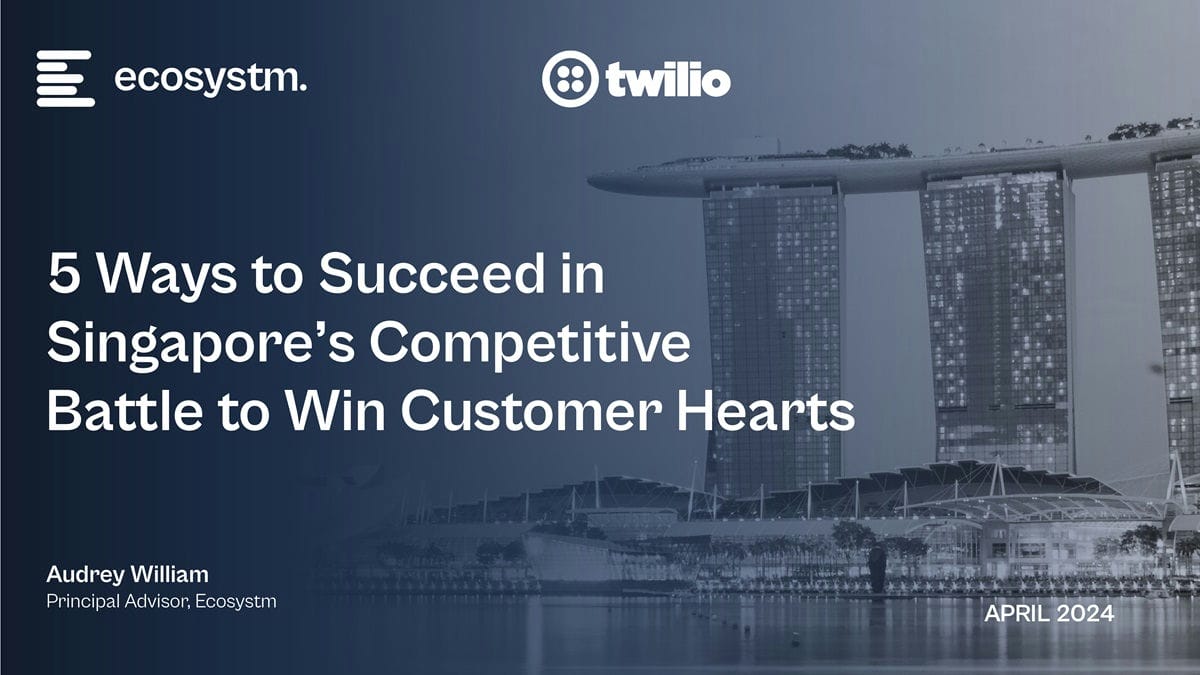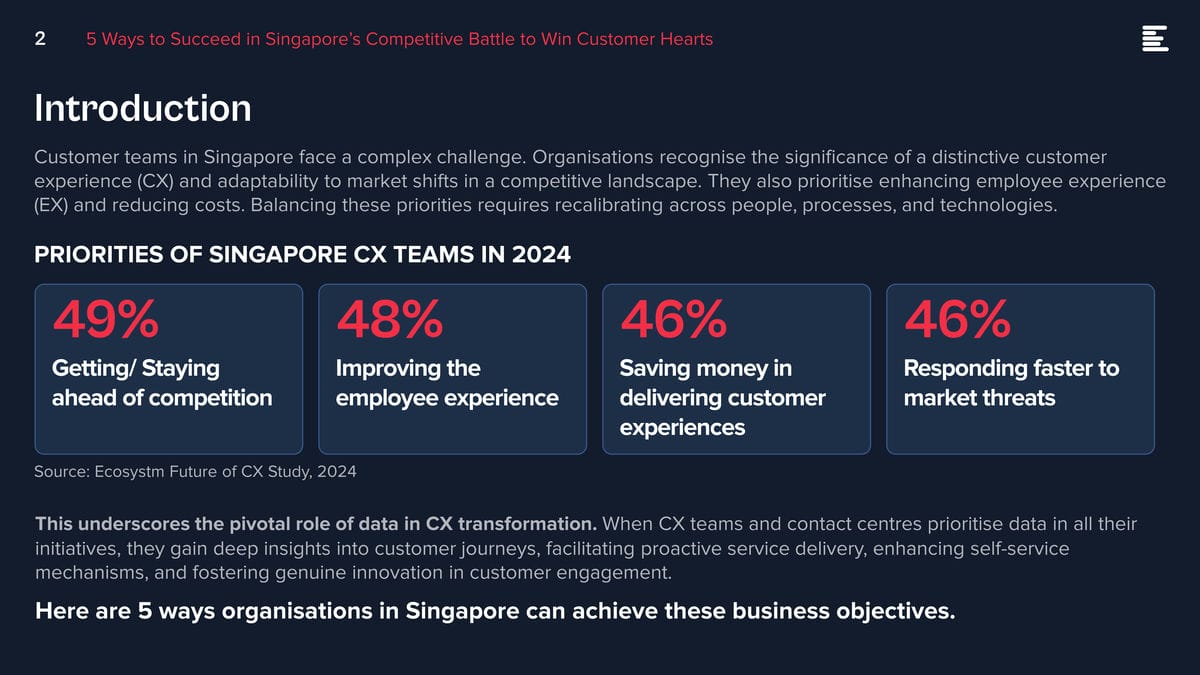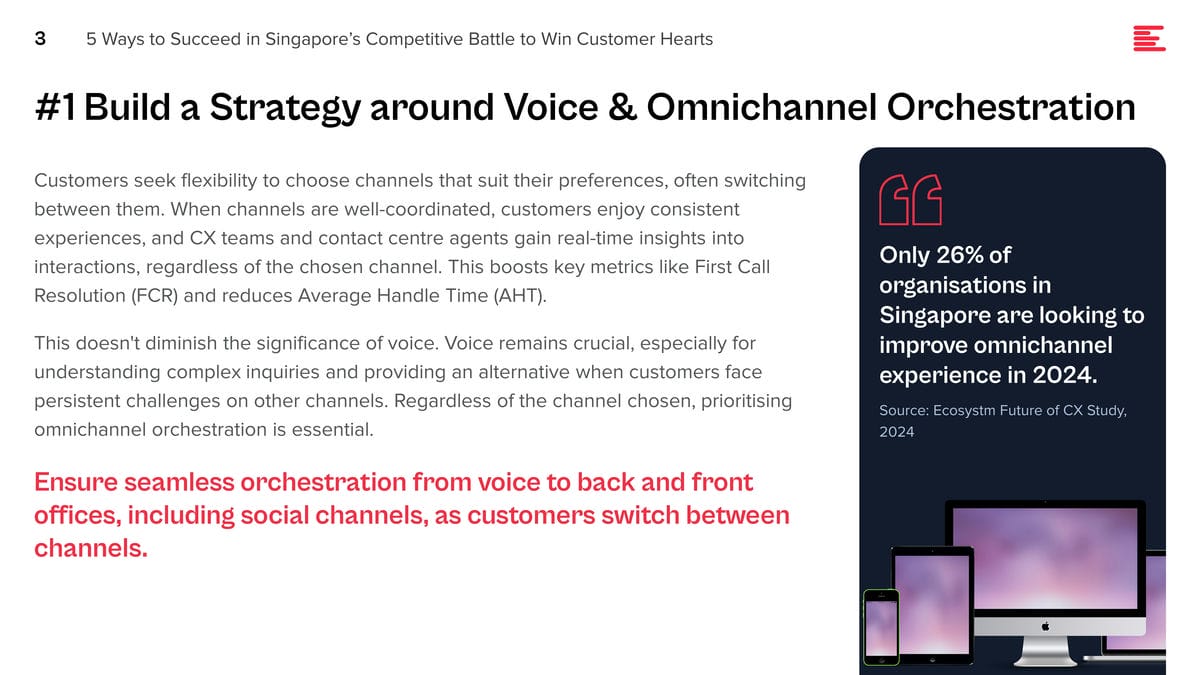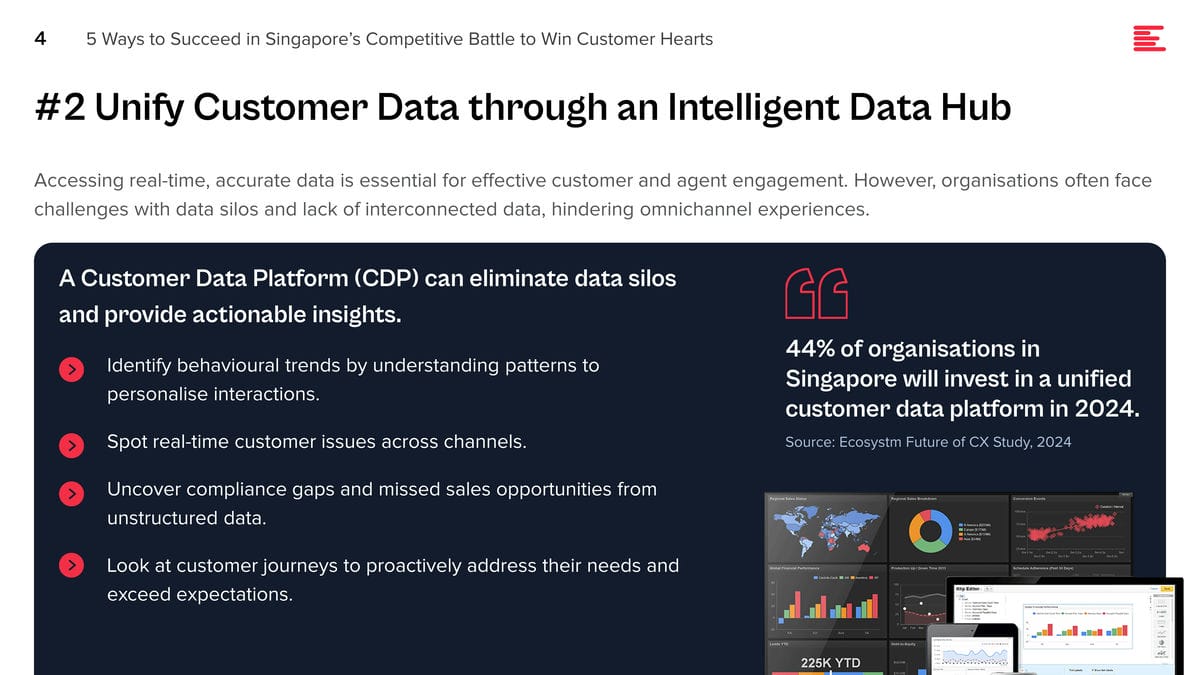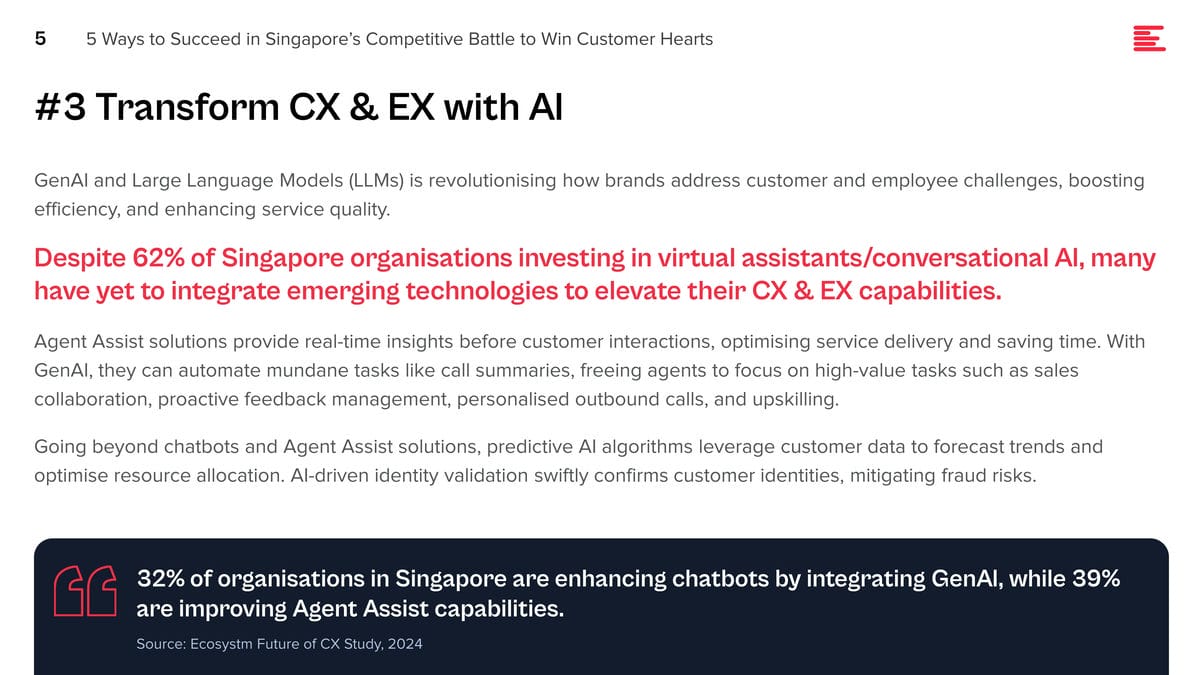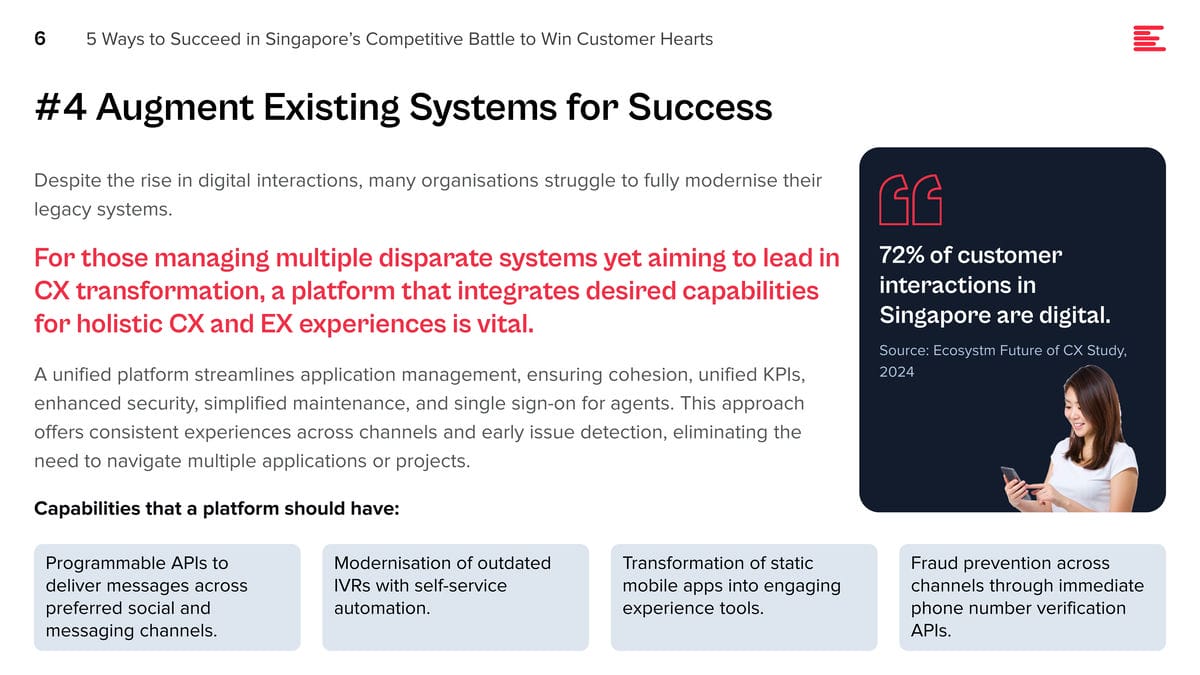We’re entering a new cycle of PC device growth, driven by the end-of-life of Windows 10 and natural enterprise upgrade cycles, brought into alignment by the COVID-era device boom. In Asia Pacific, PC shipments are expected to grow by 4-8% in 2025. The wide range reflects uncertainty linked to the US tariff regime, which could impact device pricing and availability in the region as manufacturers adjust to shifting demand globally.
To AI or Not to AI?
“AI PCs” (or Copilot PCs) are set to become a growing segment, but real AI benefits from these devices are still some way off. Microsoft’s announcement to embed Agentic AI capabilities into the OS marks the first step toward moving AI processing from the cloud to the desktop. However, for most organisations, these capabilities remain 12-24 months away.
This creates a strategic question: should organisations invest now in NPU-enabled devices that may not deliver immediate returns? Given typical refresh cycles of 3-5 years, it’s worth considering whether local AI processing could become relevant during that time. The safer bet is to invest in Copilot or AI PCs now, as the AI market is evolving rapidly; and the chances of NPUs becoming useful sooner rather than later are high.
Is the Desktop Being Left Behind?
PC market growth is concentrated in the laptop segment, drawing most manufacturers and chip providers to focus their innovation there. AI and Copilot PCs have yet to meaningfully enter the desktop space, where manufacturers remain largely focused on gaming.
This creates a gap for enterprises and SMEs. AI capabilities available on laptops may not be mirrored on desktops. Recent conversations with infrastructure and End-User Computing (EUC) managers suggest a shift in Asia Pacific toward laptops or cloud/ virtual desktop infrastructure (VDI) devices, including thin clients and desktops. If this trend continues, organisations will need to re-evaluate employee experience and ensure applications are designed to match the capabilities of each device type and user persona.
Fundamental EUC Drivers are Changing
As EUC and infrastructure teams revisit their strategies, several foundational drivers are undergoing significant change:
- Remote work is no longer a default. Once considered the norm for information workers, remote work is now being reconsidered. With some organisations mandating full-time office returns, device strategies must adapt to a more hybrid and unpredictable working model.
- Employee Experience is losing budget priority. During the pandemic, keeping employees productive and engaged was critical. But with rising cost pressures, growing automation through GenAI and Agentic AI, and changing labour dynamics, EX is no longer a top enterprise priority and budgets reflect that shift.
- Cloud-based EUC solutions are now enterprise-ready. Since 2022, cloud adoption in EUC has accelerated. Solutions like Microsoft 365, Google Workspace, AWS WorkSpaces, and VMware Horizon Cloud now offer mature capabilities. Unified Endpoint Management (UEM) is increasingly cloud-managed, enabling more scalable and agile IT operations.
- Zero-trust is moving security closer to the user. EUC security is evolving from perimeter-based models to identity-centric, continuous verification approaches. Investments in EDR, AI-driven threat analytics, MFA, biometric authentication, and proactive threat hunting are now standard, driven by the shift to zero trust.
- Device diversity is increasing. Standardised device fleets are giving way to more diverse options – touchscreen laptops, foldables, and a broader mix of PC brands. Enterprise offerings are expanding beyond traditional tiers to meet varied needs across user personas.
- Metrics are shifting from technical to outcome-based. Traditional KPIs like uptime and cost are giving way to metrics tied to business value – employee productivity, experience, collaboration, cyber resilience, and adaptability. EUC success is now measured in terms of outcomes, not just infrastructure performance.
Build a Modern and Future-Ready EUC Strategy
Organisations must reassess their plans to align with changing business needs, user expectations, and operational realities. Modern EUC strategies must account for a broad set of considerations.
Key factors to consider:
Strategic Business Alignment
- Business Outcomes. EUC strategies must align with core business goals such as boosting productivity, enhancing employee experience, improving customer outcomes, and driving competitive advantage. Consider how device choices enable new work models, such as remote/hybrid setups, gig workforce enablement, and cross-border collaboration.
- Digital Transformation Fit. Ensure EUC refresh cycles are integrated with broader digital transformation efforts – cloud migration, AI adoption, automation, and innovation. Devices should be future-ready, capable of supporting the AI and automation needs of 2026 and beyond. While some workloads may shift to the cloud, others like GenAI-powered video and image creation, may demand stronger local processing across the broader workforce, not just specialist teams.
Technology Considerations
- Device Selection. Move beyond the old “one device per persona” approach. Build a flexible device ecosystem that supports a range of employee types, from frontline workers to power users, while allowing for broader device choices based on real usage patterns. Evaluate form factors like desktops, laptops, tablets, smartphones, and thin/zero clients. With the rise of Desktop-as-a-Service (DaaS), thin clients are becoming more viable, offering cost savings and better security without compromising user experience.
- Flexibility of Choice. High-end features – lightweight design, long battery life, sleek aesthetics – are no longer limited to exec devices. I am currently writing this on a loan device – a Lenovo ThinkPad X1 Carbon Gen 13 Aura Edition – a freakishly light, powerful and slim device with LONG battery life – a device typically targeted towards the top tier of business leaders. But today, many of the features of this device run through the entire Lenovo laptop ecosystem – the “Aura” tag appears in many of the device SKUs and ranges. Hopefully the days of senior management getting the great looking devices and everyone else getting ugly bricks are behind us!
- Operating Systems and Compatibility. Ensure compatibility with current and planned business applications, cloud services, and collaboration tools. Consider ease of management and integration into existing IT ecosystems (such as Windows, macOS, Android, Chrome OS, Linux environments).
- Cloud Integration. Evaluate cloud-readiness and seamless integration capabilities with popular productivity suites (Microsoft 365, Google Workspace), hybrid cloud, and SaaS applications. Leverage VDI, DaaS or application virtualisation solutions to reduce hardware dependency and streamline maintenance.
User Experience
- Employee Productivity and Engagement. Even as EX slips down the priority list – and the budget – EUC leaders must still champion intuitive, user-friendly devices to boost productivity and reduce training and support demands. Seamless collaboration is critical across physical, remote, and hybrid teams. In-office collaboration is back in focus, but its value depends on digitising outcomes: laptops, smartphones, and tablets must enable AI-driven transcription, task assignment, and follow-up tracking from physical or hybrid meetings.
- Personalisation and Mobility. Where practical, offer device personalisation through flexible BYOD or CYOD models. Even in industries or geographies where this isn’t feasible, small touches like device colour or accessories, can improve engagement. UEM tools are essential to enforce security while enabling flexibility.
- Performance and Reliability. Choose devices that deliver the right performance for the task, especially for users handling video, design, or AI workloads. Prioritise long battery life and reliable connectivity, including Wi-Fi 6/7 and 5G where available. While 5G laptops are still rare across many Asia Pacific markets, that’s likely to change as networks expand and manufacturers respond to demand.
- Localised Strategy. Given the distributed nature of many organisations in the region, support and warranty strategies should reflect local realities. Tiered service agreements may provide better value than one-size-fits-all premium coverage that’s difficult to deliver consistently.
Security and Compliance
- Cybersecurity Posture. EUC teams typically work hand-in-hand with their cyber teams in the development of a secure EUC strategy and the deployment of the preferred devices. Cybersecurity teams will likely provide specific guidance and require compliance with local and regional regulations and laws. They will likely require that EUC teams prioritise integrated security capabilities (such as zero-trust architectures, endpoint detection and response – EDR solutions, biometrics, hardware-based security features like TPM). Consider deploying AI-driven endpoint threat detection and response tools for proactive threat mitigation.
- Data Privacy and Regulatory Compliance. Assess devices and management systems to ensure adherence to local regulatory frameworks (such as Australia’s Privacy Act, Singapore’s PDPA, or the Philippines’ Data Privacy Act). Deploy robust policies and platforms for data encryption, remote wiping, and identity and access management (IAM).
Management, Sustainability and Operational Efficiency
- Unified Endpoint Management (UEM). Centralise device management through UEM platforms to streamline provisioning, policy enforcement, patching, updates, and troubleshooting. Boost efficiency further with automation and self-service tools to lower IT overhead and support costs.
- Asset Lifecycle Management (ALM). While many organisations have made progress in optimising ALM – from procurement to retirement – gaps remain, especially in geographies outside core operations. Use device analytics to monitor health, utilisation, and performance, enabling smarter refresh cycles and reduced downtime.
- Sustainable IT and CSR Alignment. Choose vendors with strong sustainability credentials such as energy-efficient devices, ethical manufacturing, and robust recycling programs. Apply circular economy principles to extend device lifespan, reduce e-waste, and lower your carbon footprint. Align EUC strategies with broader CSR and ESG goals, using device refresh cycles as opportunities to advance sustainability targets and reinforce your organisation’s values.
Cost and Investment Planning
- Total Cost of Ownership (TCO). Evaluate TCO holistically, factoring in purchase price, operations, software licensing, security, support, warranties, and end-of-life costs. TCO frameworks are widely available, but if you need help tailoring one to your business, feel free to reach out. Balance CapEx and OpEx across different deployment models – owned vs leased, cloud-managed vs on-premises.
- Budgeting & Financial Modelling. Clearly define ROI and benefit realisation timelines to support internal approvals. Explore vendor financing or consumption-based models to enhance flexibility. These often align with sustainability goals, with many vendors offering equipment recycling and resale programs that reduce overall costs and support circular IT practices.
Vendor and Partner Selection
- Vendor Support & Regional Coverage. Select vendors with strong regional support across Asia Pacific to ensure consistent service delivery across diverse markets. Many organisations rely on distributors and resellers for their extended reach into remote geographies. Others prefer working directly with manufacturers. While this can reduce procurement costs, it may increase servicing complexity and response times. Assess vendors not just on cost, but on local presence, partner network strength, and critically, their supply chain resilience.
- Innovation & Ecosystem Alignment. Partner with vendors whose roadmaps align with future technology priorities – AI, IoT, edge computing – and who continue to invest in advancing EUC capabilities. Long-term innovation alignment is just as important as short-term performance.
Building a modern, future-ready EUC strategy isn’t just about devices – it’s about aligning people, technology, security, sustainability, and business outcomes in a way that’s cost-effective and forward-looking. But we know investment planning can be tricky. At Ecosystm, we’ve helped organisations build ROI models that make a strong case for EUC investments. If you’d like guidance, feel free to reach out – we’re here to help you get it right.

AI has broken free from the IT department. It’s no longer a futuristic concept but a present-day reality transforming every facet of business. Departments across the enterprise are now empowered to harness AI directly, fuelling innovation and efficiency without waiting for IT’s stamp of approval. The result? A more agile, data-driven organisation where AI unlocks value and drives competitive advantage.
Ecosystm’s research over the past two years, including surveys and in-depth conversations with business and technology leaders, confirms this trend: AI is the dominant theme. And while the potential is clear, the journey is just beginning.
Here are key AI insights for HR Leaders from our research.
Click here to download “AI Stakeholders: The HR Perspective” as a PDF.
HR: Leading the Charge (or Should Be)
Our research reveals a fascinating dynamic in HR. While 54% of HR leaders currently use AI for recruitment (scanning resumes, etc.), their vision extends far beyond. A striking majority plan to expand AI’s reach into crucial areas: 74% for workforce planning, 68% for talent development and training, and 62% for streamlining employee onboarding.
The impact is tangible, with organisations already seeing significant benefits. GenAI has streamlined presentation creation for bank employees, allowing them to focus on content rather than formatting and improving efficiency. Integrating GenAI into knowledge bases has simplified access to internal information, making it quicker and easier for employees to find answers. AI-driven recruitment screening is accelerating hiring in the insurance sector by analysing resumes and applications to identify top candidates efficiently. Meanwhile, AI-powered workforce management systems are transforming field worker management by optimising job assignments, enabling real-time tracking, and ensuring quick responses to changes.
The Roadblocks and the Opportunity
Despite this promising outlook, HR leaders face significant hurdles. Limited exploration of use cases, the absence of a unified organisational AI strategy, and ethical concerns are among the key barriers to wider AI deployments.
Perhaps most concerning is the limited role HR plays in shaping AI strategy. While 57% of tech and business leaders cite increased productivity as the main driver for AI investments, HR’s influence is surprisingly weak. Only 20% of HR leaders define AI use cases, manage implementation, or are involved in governance and ownership. A mere 8% primarily manage AI solutions.
This disconnect represents a massive opportunity.
2025 and Beyond: A Call to Action for HR
Despite these challenges, our research indicates HR leaders are prioritising AI for 2025. Increased productivity is the top expected outcome, while three in ten will focus on identifying better HR use cases as part of a broader data-centric approach.
The message is clear: HR needs to step up and claim its seat at the AI table. By proactively defining use cases, championing ethical considerations, and collaborating closely with tech teams, HR can transform itself into a strategic driver of AI adoption, unlocking the full potential of this transformative technology for the entire organisation. The future of HR is intelligent, and it’s time for HR leaders to embrace it.

In 2024, technology vendors have heavily invested in AI Agents, recognising their potential to drive significant value. These tools leverage well-governed, small datasets to integrate seamlessly with applications like Workday, Salesforce, ServiceNow, and Dayforce, enhancing processes and outcomes.
2025 is poised to be the year of AI Agent adoption. Designed to automate specific tasks within existing workflows, AI Agents will transform customer experiences, streamline operations, and boost efficiency. Unlike traditional AI deployments, they offer a gradual, non-disruptive approach, augmenting human capabilities without overhauling processes. As organisations adopt new software versions with embedded AI capabilities, 2025 will mark a pivotal shift in customer experience delivery.
Ecosystm analysts Audrey William, Melanie Disse, and Tim Sheedy present the top 5 trends shaping customer experience in 2025.
Click here to download ‘AI-Powered Customer Experience: Top 5 Trends for 2025’ as a PDF
1. AI Won’t Wow Many Customers in 2025
The data is in – the real focus of AI over the next few years will be on productivity and cost savings.
Senior management and boards of directors want to achieve more with less – so even when AI is being used to serve customers, it will be focused on reducing back-end and human costs.
There will be exceptions, such as the adoption of AI agents in contact centres. However, AI agents must match or exceed human performance to see broad adoption.
However, the primary focus in contact centres will be on reducing Average Handling Time (AHT), increasing call volume per agent, accelerating agent onboarding, and automating customer follow-ups.
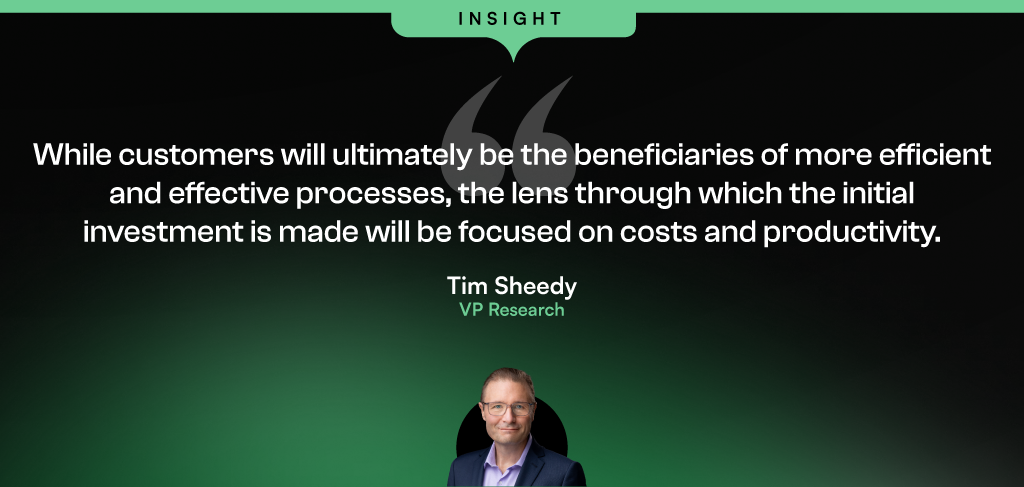
2. Organisations Will Start Treating CX as a Team Sport
As CX programs mature, 2025 will highlight the need to break down not only data and technology siloes but also organisational and cultural barriers to achieve AI-powered CX and business success.
AI and GenAI have unlocked new sources of customer data, prompting leaders to reorganise and adopt a mindset shift about CX. This involves redefining CX as a collective effort, engaging the entire organisation in the journey.
Technologies and KPIs must be aligned to drive customer AND business needs, not purely driving success in siloed areas.
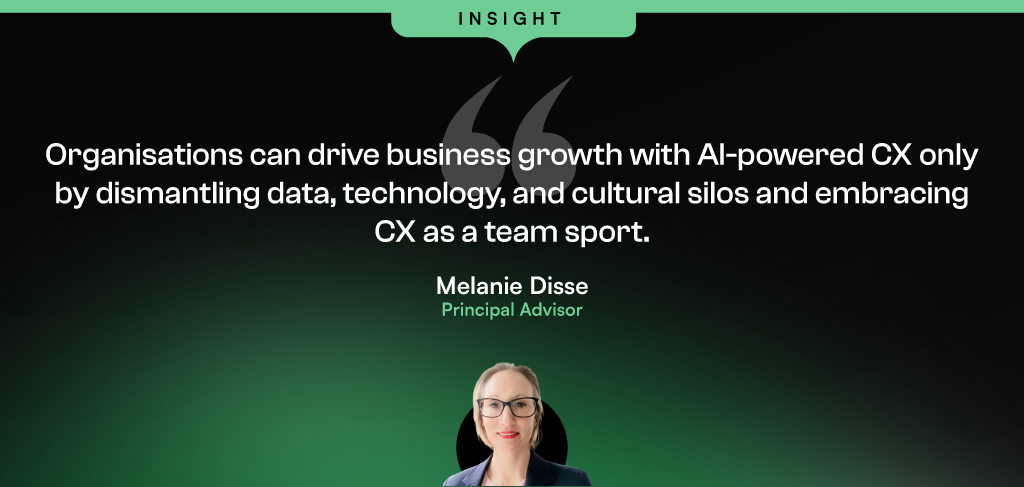
3. The First “AGI Agents” Will Emerge
AI Agents are set to explode in 2025, but even more disruptive developments in AI are on the horizon.
As conversational computing gains traction, fuelled by advances in GenAI and progress toward AGI, “Complex AI Agents” will emerge.
These “AGI Agents” will mimic certain human-like capabilities, though not fully replicating human cognition, earning their “Agent” designation.
The first use cases will likely be in software development, where these agents will act as intelligent platforms capable of transforming a described digital process or service into reality. They may include design, inbuilt testing, quality assurance, and the ability to learn from existing IP (e.g., “create an app with the same capabilities as X”).
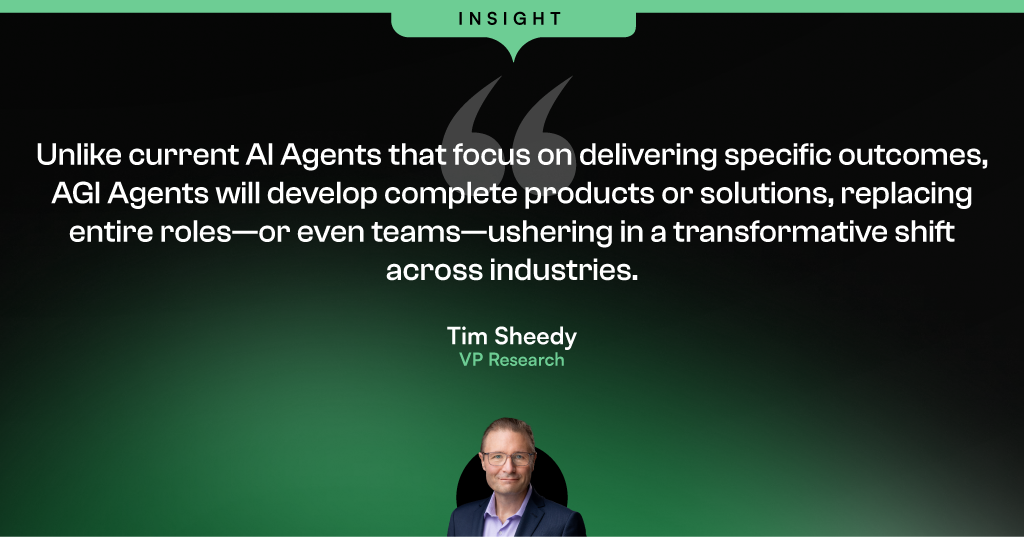
4. Intelligent AI Bots Will Enhance Contact Centre Efficiency
The often-overlooked aspect of CX is the “operational side”, where Operations Managers face significant challenges in maintaining a real-time pulse on contact centre activities.
For most organisations, this remains a highly manual and reactive process. Intelligent workflow bots can revolutionise this by acting as gatekeepers, instantly identifying issues and triggering real-time corrective actions. These bots can even halt processes causing customer dissatisfaction, ensuring problems are addressed proactively.
Operational inefficiencies, such as back-office delays, unanswered emails, and slow issue containment, create constant headaches. Integrating bots into contact centre operations will significantly reduce time wasted on these inefficiencies, enhancing both employee and customer experiences.
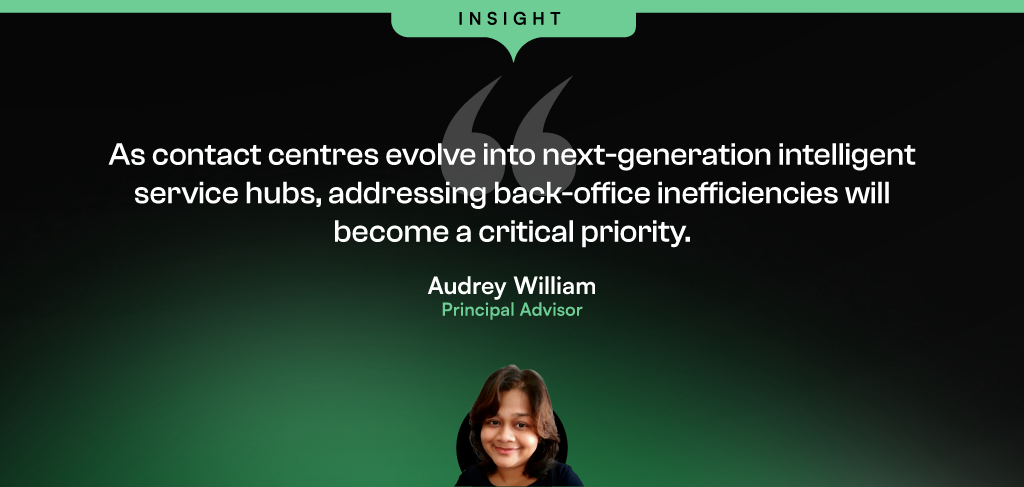
5. Employee Experience Will Catch Up to CX Maturity
Employee experience (EX) has traditionally lagged behind CX in focus and technology investment. However, AI-powered technologies are now enabling organisations to apply CX use cases to EX efforts, using advanced data analysis, summaries, and recommendations.
AI and GenAI tools will enhance understanding of employee satisfaction and engagement while predicting churn and retention drivers.
HR teams and leaders will leverage these tools to optimise performance management and improve hiring and retention outcomes.
Additionally, organisations will begin to connect EX with financial performance, identifying key drivers of engagement and linking them to business success. This shift will position EX as a strategic priority, integral to achieving organisational goals.
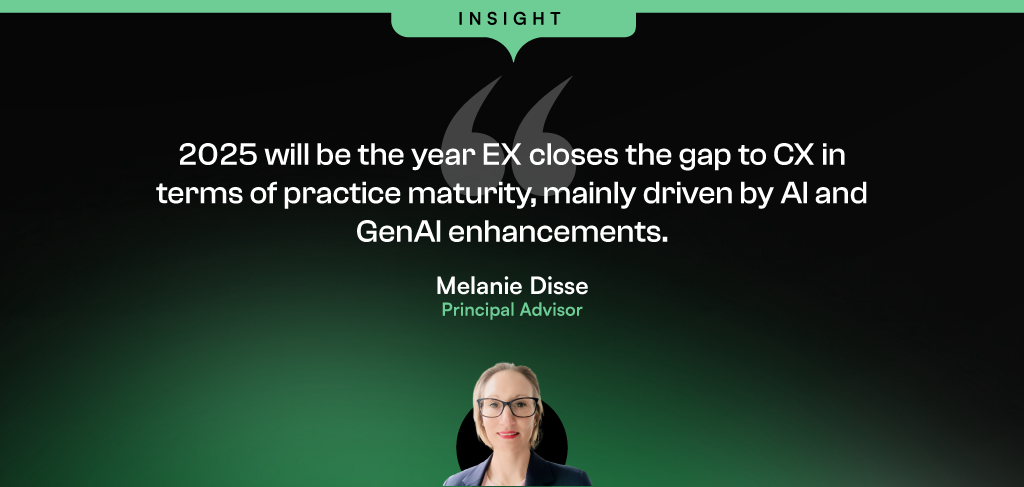

The technology market in Thailand continues to evolve at an unprecedented pace, creating both exciting opportunities and significant challenges for tech leaders in the country. Real-world AI applications and cloud expansion define the future of IT strategies in 2024, as organisations push digital transformation forward. Understanding these trends is crucial for navigating today’s market complexities and achieving exponential growth. Here are the opportunities in the Thailand technology landscape and insights on how to address them effectively.
Tech Modernisation: Breaking Free from Vendor Lock-in
Data centre consolidation and infrastructure modernisation remain top priorities for organisations in Thailand. These processes catalyse the ‘de-requisitioning’ removing outdated or unnecessary technology from an organisation’s infrastructure. But vendor lock-ins pose challenges for organisations, mainly stifling organisational flexibility, hindering innovation, and exposing them to business disruption risks.
44% of organisations in Thailand are focused on consolidating data centres and modernising tech stacks to mitigate vendor lock-ins and enhance operational efficiency.
Modernising infrastructure reduces reliance on single vendors and improves scalability and resilience. Despite the widespread adoption of hybrid and multi-cloud environments, effectively managing these systems remains challenging and requires additional strategic investments.
Over-reliance on a single provider can expose organisations to new risks. This is why CIOs in Thailand are taking decisive steps to combat technology vendor lock-in. They are centralising and modernising their data centres and enhancing cross-platform tools to reduce vendor dependency.
This approach is key to their long-term growth and innovation, allowing them to remain at the forefront of the digital transformation landscape, ready to leverage emerging technologies and adapt to expanding business challenges.
The Hybrid Cloud Labyrinth: Managing Complexity for Success
Nearly 60% of Thailand organisations have embraced hybrid and multi-cloud environments, but the challenges of managing the complexity are often underestimated.
Hybrid strategies offer numerous benefits, such as increased flexibility, optimised performance, and enhanced disaster recovery capabilities. However, managing different cloud providers, each with its unique interface and operational management tools can be challenging.
The challenges of managing a hybrid IT environment are indeed multifaceted. Integration requires harmonising various technology services to work together seamlessly, which can be complex due to differing architectures and protocols. Security is another primary concern, as managing security across on-premises and multiple cloud providers necessitates consistent policies and vigilant monitoring to prevent breaches and ensure compliance. Additionally, efficiently utilising resources across hybrid clouds involves sophisticated monitoring and automation tools to optimise performance and cost-effectiveness. These challenges are real and pressing, and they demand attention and action.
Alarmingly, only 1% of organisations in Thailand plan to increase their investments in hybrid cloud management in 2024.
Organisations can ensure seamless integration, consistent security readiness, and efficient resource utilisation across diverse cloud platforms by investing in robust tools and practices for effective hybrid cloud management. This mitigates operational risks and security vulnerabilities and leads to cost savings due to well-managed cloud environments.
It’s crucial for CIOs in Thailand to urgently prioritise investing in new comprehensive management solutions and developing the necessary skills within their IT teams. This involves training staff on the latest hybrid cloud management technologies and best practices and adopting advanced tools that provide visibility and control over multi-cloud operations. Cracking the hybrid/multi-cloud code empowers CIOs to not only navigate these environments, but also unlock the potential of advanced technologies like AI, ultimately driving superior IT services and expanded business growth. The urgency of this task cannot be overstated, and the sooner you act, the better prepared your organisation will be for the future.
The Future of Work: AI Adoption for Enhanced Productivity
AI is a powerful tool for improving employee productivity and transforming internal operations.
However, only 12% of Thailand’s organisations invest in AI to enhance the employee experience.
This represents a missed opportunity for organisations to utilise AI’s potential to streamline processes, automate repetitive tasks, and provide personalised support to employees.
AI can significantly enhance operational efficiency by automating routine tasks, enabling staff to focus on strategic initiatives. For instance, AI-driven analytics platforms can process vast amounts of data in real time, providing actionable insights that help businesses make informed decisions quickly. AI frees employees to focus on higher-level tasks like developing innovative solutions and strategies. This empowers them to take on more strategic roles, fostering personal growth and career advancement.
The early adopters of AI in Thailand are already reaping the benefits, gaining significant competitive edge by enhancing employee productivity and satisfaction.
In Thailand AI adoption is gaining momentum within tech teams – 44% are exploring its potential for various use cases.
However, its capabilities extend far beyond. AI encompasses a wide range of technologies that can generate content, such as text, images, and code, based on input data. These versatile capabilities are not limited to tech teams, but can also be used for content creation, process automation, and product design in various industries. The success of these early adopters should inspire other Thailand organisations to consider AI adoption as a means to stay ahead in the market.
The enthusiasm for AI has yet to extend beyond tech teams, with only 19% of business units considering its adoption.
This difference highlights an opportunity for CIOs in the country to play a crucial role in advocating for broader AI adoption across the organisation. By demonstrating the tangible benefits, such as increased efficiency, reduced costs, and enhanced innovation, CIOs can drive more widespread acceptance and use. Encouraging cross-departmental collaboration and training on AI applications can further support its integration across business operations. CIO leadership is crucial for successful AI adoption.
The Importance of a Collaborative Ecosystem
Together, we can navigate the intricacies of advanced technologies and foster innovation in Thailand organisation. These market trends should guide you on how to establish a resilient and adaptable IT infrastructure that facilitate long-term growth and innovation. Emphasising modernisation and the strategic use of AI will enhance operational efficiency and position your organisation to harness emerging technologies effectively, all while being part of a supportive and collaborative community.
Stay tuned for more Ecosystm insights and guidance on navigating the Thailand technology landscape, ensuring your organisation remains at the forefront of digital transformation.

The Philippines, renowned as a global contact centre hub, is experiencing heightened pressure on the global stage, leading to intensified competition within the country. Smaller BPOs are driving larger players to innovate, requiring a stronger focus on empowering customer experience (CX) teams, and enhancing employee experience (EX) in organisations in the Philippines.

As the Philippines expands its global footprint, organisations must embrace progressive approaches to outpace rivals in the CX sector.

These priorities can be achieved through a robust data strategy that empowers CX teams and contact centres to glean actionable insights.
Here are 5 ways organisations in the Philippines can achieve their CX objectives.
Download ‘Securing the CX Edge: 5 Strategies for Organisations in the Philippines’ as a PDF.
#1 Modernise Voice and Omnichannel Orchestration
Ensuring that all channels are connected and integrated at the core is critical in delivering omnichannel experiences. Organisations must ensure that the conversation can be continued seamlessly irrespective of the channel the customer chooses, without losing the context.
Voice must be integrated within the omnichannel strategy. Even with the rise of digital and self-service, voice remains crucial, especially for understanding complex inquiries and providing an alternative when customers face persistent challenges on other channels.
Transition from a siloed view of channels to a unified and integrated approach.

#2 Empower CX Teams with Actionable Customer Data
An Intelligent Data Hub aggregates, integrates, and organises customer data across multiple data sources and channels and eliminates the siloed approach to collecting and analysing customer data.
Drive accurate and proactive conversations with your customers through a unified customer data platform.
- Unifies user history across channels into a single customer view.
- Enables the delivery of an omnichannel experience.
- Identifies behavioural trends by understanding patterns to personalise interactions.
- Spots real-time customer issues across channels.
- Uncovers compliance gaps and missed sales opportunities from unstructured data.
- Looks at customer journeys to proactively address their needs.

#3 Transform CX & EX with AI/Automation
AI and automation should be the cornerstone of an organisation’s CX efforts to positively impact both customers and employees.

Evaluate all aspects of AI/automation to enhance both customer and employee experience.
- Predictive AI algorithms analyse customer data to forecast trends and optimise resource allocation.
- AI-driven identity validation reduces fraud risk.
- Agent Assist Solutions offer real-time insights to agents, enhancing service delivery and efficiency.
- GenAI integration automates post-call activities, allowing agents to focus on high-value tasks.
#4 Augment Existing Systems for Success
Many organisations face challenges in fully modernising legacy systems and reducing reliance on multiple tech providers.
CX transformation while managing multiple disparate systems will require a platform that integrates desired capabilities for holistic CX and EX experiences.
A unified platform streamlines application management, ensuring cohesion, unified KPIs, enhanced security, simplified maintenance, and single sign-on for agents. This approach offers consistent experiences across channels and early issue detection, eliminating the need to navigate multiple applications or projects.
Capabilities that a platform should have:
- Programmable APIs to deliver messages across preferred social and messaging channels.
- Modernisation of outdated IVRs with self-service automation.
- Transformation of static mobile apps into engaging experience tools.
- Fraud prevention across channels through immediate phone number verification APIs.

#5 Focus on Proactive CX
In the new CX economy, organisations must meet customers on their terms, proactively engaging them before they initiate interactions. This requires a re-evaluation of all aspects of CX delivery.
- Redefine the Contact Centre. Transforming it into an “Intelligent” Data Hub providing unified and connected experiences; leveraging intelligent APIs to proactively manage customer interactions seamlessly across journeys.
- Reimagine the Agent’s Role. Empowering agents to be AI-powered brand ambassadors, with access to prior and real-time interactions, instant decision-making abilities, and data-led knowledge bases.
- Redesign the Channel and Brand Experience. Ensuring consistent omnichannel experiences through unified and coherent data; using programmable APIs to personalise conversations and discern customer preferences for real-time or asynchronous messaging; integrating innovative technologies like video to enrich the channel experience.

Customer teams in Singapore face a complex challenge. Organisations recognise the significance of a distinctive customer experience (CX) and adaptability to market shifts in a competitive landscape. They also prioritise enhancing employee experience (EX) and reducing costs. Balancing these priorities requires recalibrating across people, processes, and technologies.

This underscores the pivotal role of data in CX transformation. When CX teams and contact centres prioritise data in all their initiatives, they gain deep insights into customer journeys, facilitating proactive service delivery, enhancing self-service mechanisms, and fostering genuine innovation in customer engagement.
Here are 5 ways organisations in Singapore can achieve these business objectives.
Download ‘5 Ways to Succeed in Singapore’s Competitive Battle to Win Customer Hearts’ as a PDF.
#1 Build a Strategy around Voice & Omnichannel Orchestration
Customers seek flexibility to choose channels that suit their preferences, often switching between them. When channels are well-coordinated, customers enjoy consistent experiences, and CX teams and contact centre agents gain real-time insights into interactions, regardless of the chosen channel. This boosts key metrics like First Call Resolution (FCR) and reduces Average Handle Time (AHT).
This doesn’t diminish the significance of voice. Voice remains crucial, especially for understanding complex inquiries and providing an alternative when customers face persistent challenges on other channels. Regardless of the channel chosen, prioritising omnichannel orchestration is essential.
Ensure seamless orchestration from voice to back and front offices, including social channels, as customers switch between channels.

#2 Unify Customer Data through an Intelligent Data Hub
Accessing real-time, accurate data is essential for effective customer and agent engagement. However, organisations often face challenges with data silos and lack of interconnected data, hindering omnichannel experiences.
A Customer Data Platform (CDP) can eliminate data silos and provide actionable insights.
- Identify behavioural trends by understanding patterns to personalise interactions.
- Spot real-time customer issues across channels.
- Uncover compliance gaps and missed sales opportunities from unstructured data.
- Look at customer journeys to proactively address their needs and exceed expectations.

#3 Transform CX & EX with AI
GenAI and Large Language Models (LLMs) is revolutionising how brands address customer and employee challenges, boosting efficiency, and enhancing service quality.
Despite 62% of Singapore organisations investing in virtual assistants/conversational AI, many have yet to integrate emerging technologies to elevate their CX & EX capabilities.
Agent Assist solutions provide real-time insights before customer interactions, optimising service delivery and saving time. With GenAI, they can automate mundane tasks like call summaries, freeing agents to focus on high-value tasks such as sales collaboration, proactive feedback management, personalised outbound calls, and upskilling.
Going beyond chatbots and Agent Assist solutions, predictive AI algorithms leverage customer data to forecast trends and optimise resource allocation. AI-driven identity validation swiftly confirms customer identities, mitigating fraud risks.

#4 Augment Existing Systems for Success
Despite the rise in digital interactions, many organisations struggle to fully modernise their legacy systems.
For those managing multiple disparate systems yet aiming to lead in CX transformation, a platform that integrates desired capabilities for holistic CX and EX experiences is vital.
A unified platform streamlines application management, ensuring cohesion, unified KPIs, enhanced security, simplified maintenance, and single sign-on for agents. This approach offers consistent experiences across channels and early issue detection, eliminating the need to navigate multiple applications or projects.
Capabilities that a platform should have:
- Programmable APIs to deliver messages across preferred social and messaging channels.
- Modernisation of outdated IVRs with self-service automation.
- Transformation of static mobile apps into engaging experience tools.
- Fraud prevention across channels through immediate phone number verification APIs.

#5 Focus on Proactive CX
In the new CX economy, organisations must meet customers on their terms, proactively engaging them before they initiate interactions. This will require organisations to re-evaluate all aspects of their CX delivery.
- Redefine the Contact Centre. Transform it into an “Intelligent” Data Hub providing unified and connected experiences. Leverage intelligent APIs to proactively manage customer interactions seamlessly across journeys.
- Reimagine the Agent’s Role. Empower agents to be AI-powered brand ambassadors, with access to prior and real-time interactions, instant decision-making abilities, and data-led knowledge bases.
- Redesign the Channel and Brand Experience. Ensure consistent omnichannel experiences through data unification and coherency. Use programmable APIs to personalise conversations and identify customer preferences for real-time or asynchronous messaging. Incorporate innovative technologies such as video to enhance the channel experience.

It seems for many employees, the benefits of working from home or even adopting a hybrid model are a thing of the past. Employees are returning to the grind of long commutes and losing hours in transit. What is driving this shift in sentiment? CEOs, who once rooted for remote work, have undergone a change of heart – many say that remote work hampers their ability to innovate.
That may not be the real reason, however. There is a good chance that the CEO and/or other managers feel they have lost control or visibility over their employees. Returning to a more traditional management approach, where everyone is within direct sight, might seem like a simpler solution.
The Myths of Workplace Innovation
I find it ironic that organisations say they want employees to come into the office because they cannot innovate at the same rate. What the last few years have demonstrated – and quite conclusively – is that employees can innovate wherever they are, if they are driven to it and have the right tools. So, organisations need to evaluate whether they have innovated on and evolved their hybrid and remote work solutions effectively, to continue to support hybrid work – and innovation.
What is confusing about this stance that many organisations are taking, is that when an organisation has multiple offices, they are effectively a hybrid business – they have had people working from different locations, but have never felt the need to get all their staff together for 3-5 days every week for organisation-wide innovation that is suddenly so important today.
The CEO of a tech research firm once said – the office used to be considered the place to get together to use the tools we need to innovate; but the reality is that the office is just one of the tools that businesses have, to drive their organisation forward. Ironically, this same CEO has recently called everyone back into the office 3 days a week!
Is Remote Work the Next Step in Employee Rights?
It has become clear that remote and hybrid work is the next step in employees getting greater rights. Many organisations fought against the five-day work weeks, claiming they wouldn’t make as much money as they did when employees worked whenever they were told. They fought against the 40-hour work week (in France some fought against the 35-hour work week!) They fight against the introduction of new public holidays, against increases to the minimum wages, against paid parental leave.
Some industries, companies, unions, and countries are looking to (or already have) formalised hybrid and remote work in their policies and regulations. More unions and businesses will do this – and employees will have choice.
People will have the option to work for an employer who wants their employees to come into the office – or work for someone else. And this will depend on preferences and working styles – some employees enjoy the time spent away from home and like the social nature of office environments. But many also like the extra time, money, and flexibility that remote work allows.
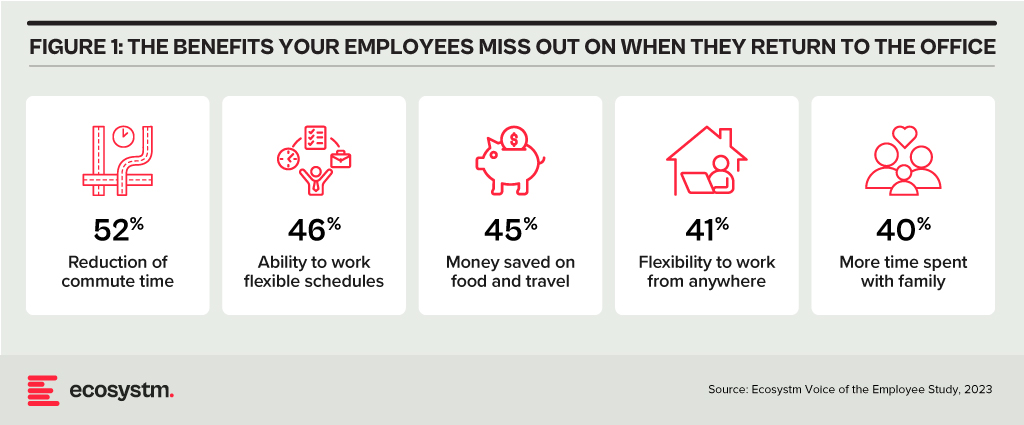
There might be many reasons why leadership teams would want employees to come into the office – and establishing and maintaining a common corporate culture would be a leading reason. But what they need to do is stop pretending it is about “innovation”. Innovation is possible while working remotely, as it is when working from separate offices or even different floors within the same building.
Evolving Employee Experience & Collaboration Needs
Organisations today face a challenge – and it is not the inability to innovate in a hybrid work environment! It is in their ability to deliver the employee experience that their employees want. This is more challenging now because there are more preferences, options, and technologies available. But it is established that organisations need to continue to evolve their employee experience.
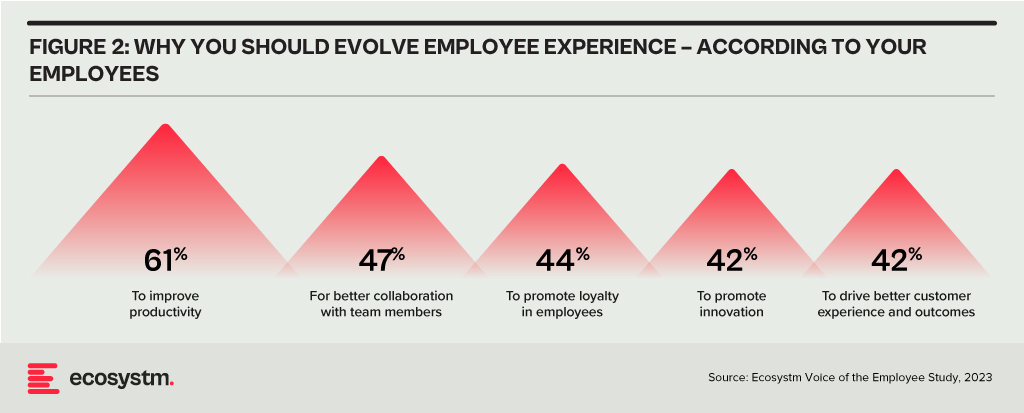
Technology does and will continue to play an important role in keeping our employees connected and productive. AI – such as Microsoft Copilot – will continue to improve our productivity. But the management needs to evolve with the technology. If the senior management feels that connecting people will help to solve the current growth challenges in the business, then it becomes the role of managers to better connect people – not just teams in offices, but virtual teams across the entire organisation.
Organisations that have focused their energies on connecting their employees better, regardless of their location (such as REA in Australia), find that productivity and innovation rates are better than when people are physically together. What do they do differently?
- Managers find their roles have moved from supporting individual employees to connecting employees
- Documentation of progress and challenges means that everyone knows where to focus their energies
- Managed virtual (and in-person) meetings mean that everyone has a voice and gets to contribute (not the loudest, most talkative or most senior person)
Remote and hybrid workers are often well-positioned to come up with new and innovative ideas. Senior management can encourage innovation and risk-taking by creating a safe environment for employees to share their ideas and by providing them with the resources they need to develop and implement their ideas. Sometimes these resources are in an office – but they don’t have to be. Manufacturers are quickly moving to complete digital development, prototyping, and testing of their new and improved products and services. Digital is often faster, better, and more innovative than physical – but employees need to be allowed to embrace these new platforms and tools to drive better organisational and customer outcomes.
What the pandemic has taught us is that people are good at solving problems; they are good at innovating irrespective of whether their managers are watching or not.

Organisations have had to transform and innovate to survive over the last two years. However, now when they look at their competitors, they see that everyone has innovated at about the same pace. The 7-year innovation cycle is history in today’s world – organisations need the right strategy and technologies to bring the time to market for innovations down to 1-2 years.
As they continue to innovate to stay ahead of the competition, here are 5 things organisations in India should keep in mind:
- The drivers of innovation will shift rapidly and industry trends need to be monitored continually to adapt to these shifts.
- Their biggest challenge in deploying Data & AI solutions will be identification of the right data for the right purpose – this will require a robust data architecture.
- While customer experience gives them immediate and tangible benefits, employee experience is almost equally – if not more – important.
- Cloud investments have helped build distributed enterprises – but streamlining investments needs a lot of focus now.
- There is a misalignment between organisations’ overall awareness of growing cyber threats and risks and their responses to them. A new cyber approach is urgently needed.
More insights into the India tech market are below.
Click here to download The Future of the Digital Enterprise – Southeast Asia as a PDF

Businesses in Australia have come a long way over the past few years in digitising their processes and capabilities. In early 2020 – as the pandemic swept across the globe – nearly every business began to understand the challenges that lay ahead in digitising their organisation to meet the needs of fully remote employees and customers. Teams all across the business started to plug holes, reshape processes and deploy new technology capabilities to quickly meet these changing needs. This work continued over the next few years to the point now that most businesses in Australia have fully digital front-ends.
But as businesses move to “COVID normal” they are looking to the next opportunity. Digitising existing processes isn’t enough – they are starting to accelerate their innovation to create entirely new digitally native products and services. Growth by selling more of what they make is being replaced by a desire to grow into new markets, new products and new services. Business innovation has leapt back onto the agenda – and the ability to innovate at pace will define success in this new era.
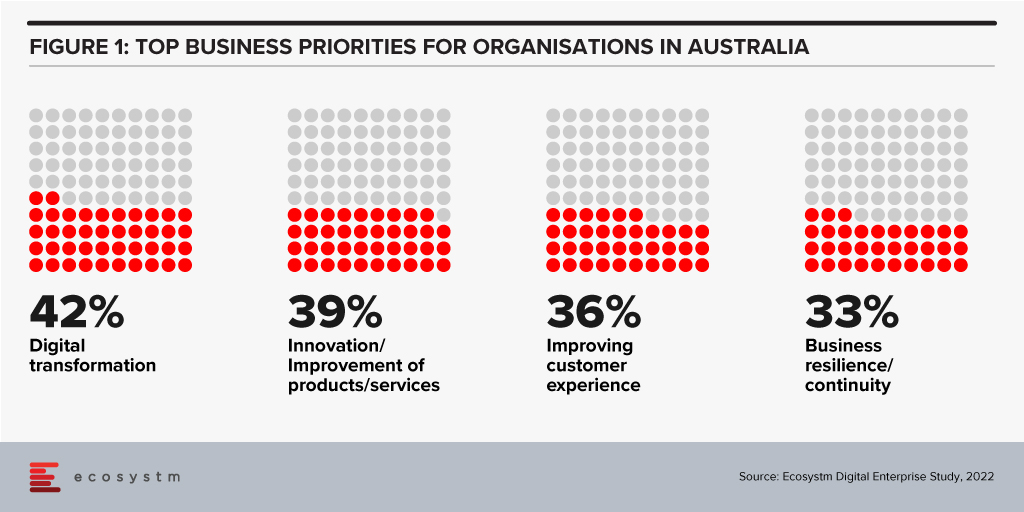
Improving IT Operations is a Major Priority for Tech Leaders in Australia
At the same time, technology leaders and their teams are dealing with technical debt and process complexity brought on by two years of accelerated and unplanned technology implementations. There is an urgent need to modernise IT Operations to better manage the growing number and complexity of digital systems. With the increasing importance of digital services to business, the Service Management and Tech Operations functions need increased investment, better processes, and greater automation to find and fix technology issues to minimise the impact of these issues on customer and employee outages.
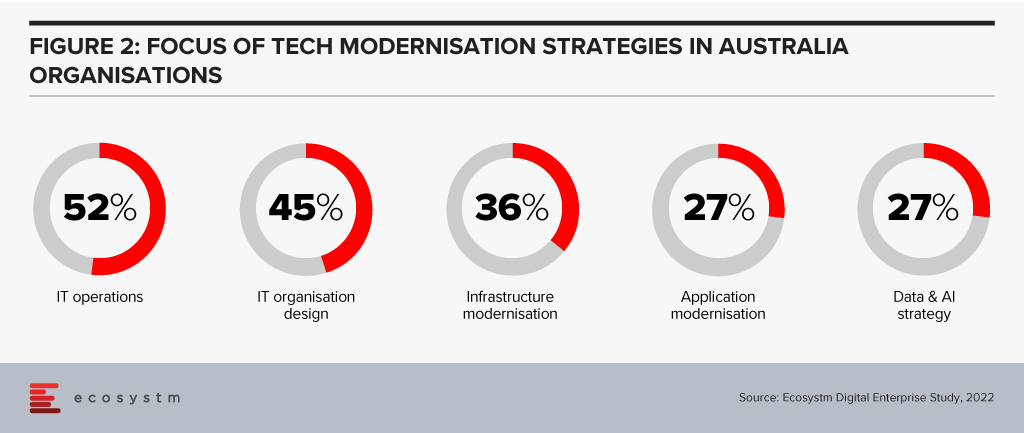
The Skills Crisis is Real – and Not Going Away Soon
The challenge today is to drive this important change while faced with the tech skills shortage. IT has not been spared the struggles that come with a low unemployment market – but often many of the Employee Experience initiatives designed to improve employee retention and loyalty are not designed with the tech team in mind. The demand for tech skills is from the lowest to the highest levels – from level 1 helpdesk operators to security, coding, cloud, and system management professionals – tech leaders are finding it very difficult to find and keep good staff.
Hybrid Cloud is Gaining Traction in Australia
As tech leaders design the technology team and architecture that will help to drive their business forward and enable the agile, innovative future that the business leaders imagine, it is becoming clear that the hybrid cloud will play an increasingly important role in this future. While the drive to public cloud is real – there is an increasing recognition that some applications will remain in private cloud environments and therefore they need to manage a multi-cloud world. Australian businesses have embraced hybrid cloud management platforms to manage their many cloud investments – both public and private – and help the business deliver new digital services at pace.
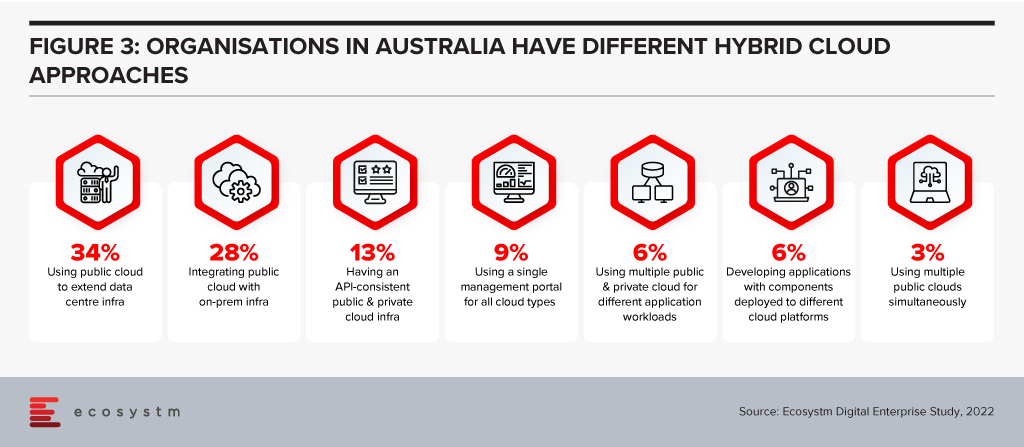
Tech Leaders Need to Perform a Balancing Act
The need to deploy new digital services, continuously improve them, make them always available, ensure they are running in the best environment, deliver automation and AI initiatives using great data – while finding and keeping the skills the tech team needs – are the real challenges that IT leaders face today. Finding the right balance between investment, automation, skills, governance, security, speed and agility (amongst many other factors) is the never-ending job of the CIO – it is just more crucial than ever that they get this right, as the ability of the business to survive and thrive in this new era of innovation and agility is at stake.



